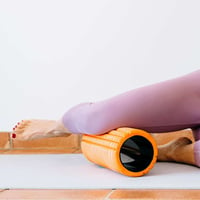Temporomandibular Joint (TMJ) Disorder is a condition that affects the jaw joint and surrounding...
What Is A Herniated Disc? Your Expert Guide To Recovery

A herniated disc, also known as a slipped or ruptured disc, is a common spinal condition that occurs when the soft, gel-like center of a spinal disc pushes through a tear in the outer layer. This can irritate nearby nerves, leading to pain, numbness, and weakness in the back, legs, or arms.
While a herniated disc can be painful and disruptive, physical therapy, targeted exercises, and lifestyle modifications can help manage symptoms and promote healing. Read on to learn about the causes, symptoms, and expert-backed management strategies for a herniated disc, including how physical therapy in NYC can help you recover safely and effectively.
What Causes a Herniated Disc?
The spine consists of vertebrae separated by intervertebral discs, which act as cushions to absorb shock and allow flexibility. A herniated disc occurs when the outer layer (annulus fibrosus) weakens or tears, allowing the inner gel-like material (nucleus pulposus) to bulge outward.
Common causes include:
- Age-related degeneration – Over time, spinal discs lose hydration and elasticity, making them more prone to tearing.
- Repetitive movements – Activities that involve twisting, bending, or heavy lifting can increase disc stress.
- Poor posture and prolonged sitting – Slouching or hunching over can put excessive pressure on spinal discs.
- Trauma or injury – Sudden impacts, such as falls or car accidents, can lead to disc herniation.
- Obesity and lack of core strength – Extra weight and weak core muscles can strain the spine, contributing to disc damage.
For a detailed breakdown of herniated disc causes, visit NYU Langone Health’s spine care resource.
Recognizing the Symptoms of a Herniated Disc
Herniated disc symptoms vary depending on the location of the disc and the nerves affected. The most common symptoms include:
- Lower back pain (if the herniation occurs in the lumbar spine)
- Neck pain and stiffness (if in the cervical spine)
- Radiating pain down the leg or arm (sciatica symptoms from lumbar disc herniation)
- Numbness, tingling, or burning sensations in affected areas
- Muscle weakness that may affect grip strength, walking, or standing
How Can Physical Therapy Help?
Seeking physical therapy near you can be one of the most effective ways to reduce pain, restore mobility, and strengthen the spine after a herniated disc. A physical therapist in NYC can design a personalized program that includes:
1. Manual Therapy and Spinal Mobilization
- Gentle spinal manipulation techniques to improve mobility and reduce nerve irritation.
- Soft tissue mobilization to release tight muscles around the spine.
2. Core Strengthening Exercises
- Strengthening the abdominal and lower back muscles helps stabilize the spine and reduce excessive disc pressure.
- Exercises such as planks, bird dogs, and pelvic tilts can improve spinal support.
3. Nerve Gliding and Stretching Techniques
- Nerve glides can reduce irritation by gently mobilizing compressed nerves.
- Hamstring and hip flexor stretches can relieve pressure on the lower back.
4. Postural and Ergonomic Training
- Teaching proper sitting, standing, and lifting mechanics to prevent further disc strain.
- Guidance on optimal workstation setup to support spinal health.
5. Low-Impact Aerobic Conditioning
- Activities like walking, swimming, or stationary cycling improve circulation and promote healing.
Self-Care and Prevention Strategies
In addition to physical therapy in NYC, adopting self-care strategies can speed up recovery and prevent future herniations.
1. Use Heat and Ice Therapy
- Ice packs can reduce acute inflammation, while heat therapy can relax tight muscles.
2. Maintain Proper Posture
- Sit with a neutral spine, feet flat on the ground, and lower back supported.
3. Avoid Heavy Lifting and Twisting Motions
- Use your legs and core instead of your lower back when lifting objects.
4. Stay Active with Low-Impact Exercises
- Engaging in gentle stretching and core-strengthening routines can reduce stiffness and maintain flexibility.
5. Maintain a Healthy Weight
- Excess weight can increase stress on spinal discs, making herniations more likely.
When to See a Doctor or Physical Therapist
If symptoms persist for more than 4-6 weeks, worsen over time, or cause neurological deficits like loss of bladder control or severe leg weakness, immediate medical attention is necessary. A doctor may order imaging tests such as X-rays, MRIs, or CT scans to assess the severity of the herniation.
A physical therapy place near you specializing in spinal rehabilitation can provide structured guidance to reduce pain and restore movement.
Final Thoughts
A herniated disc can be painful and frustrating, but with treatment from a physical therapist near you —you can regain function and prevent long-term complications. If you’re looking for expert care, find and book a physical therapist in seconds on MotionSync to start finally feeling better!




